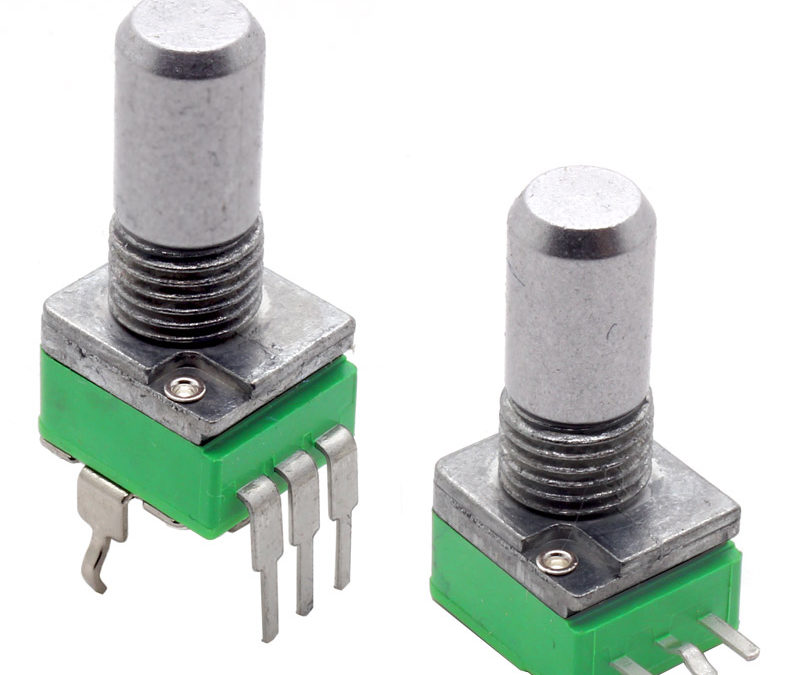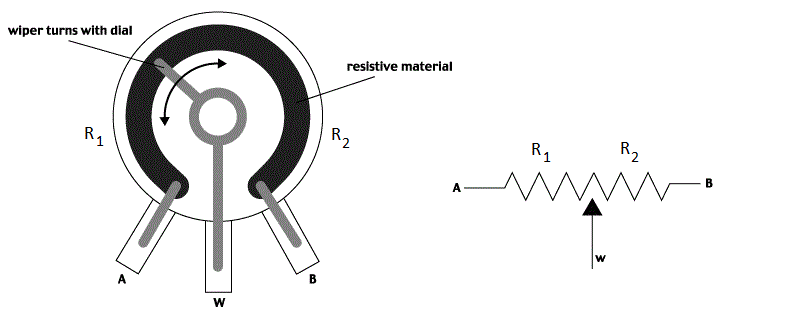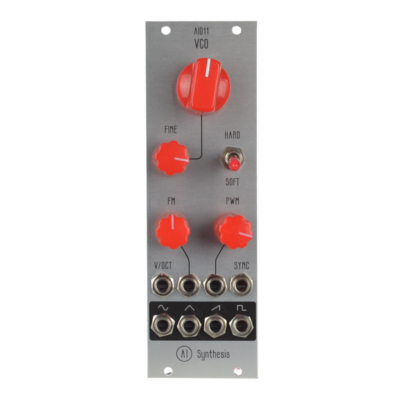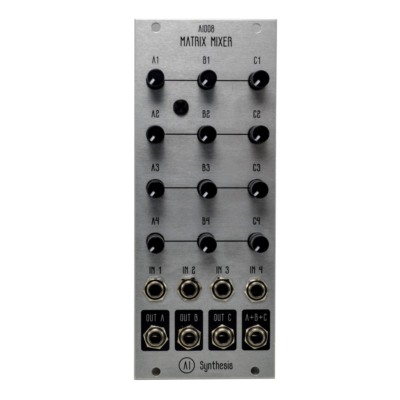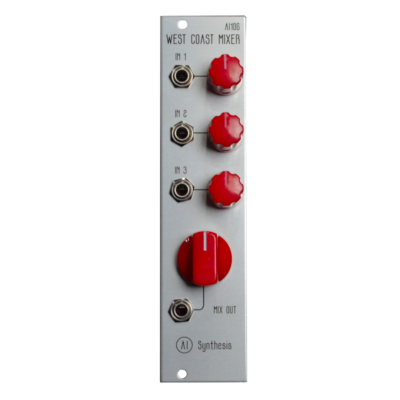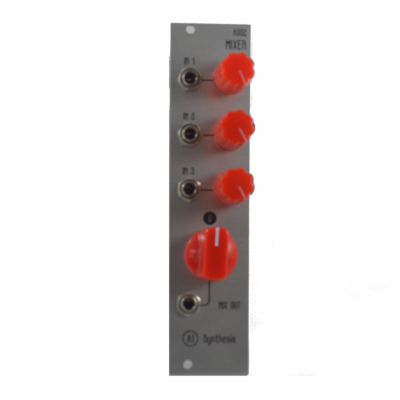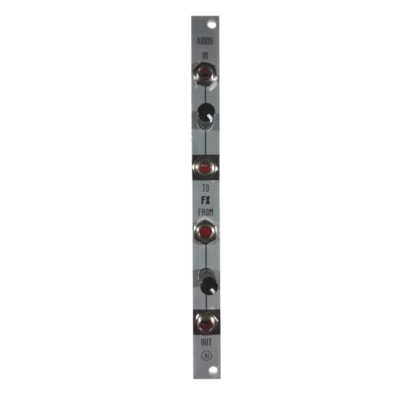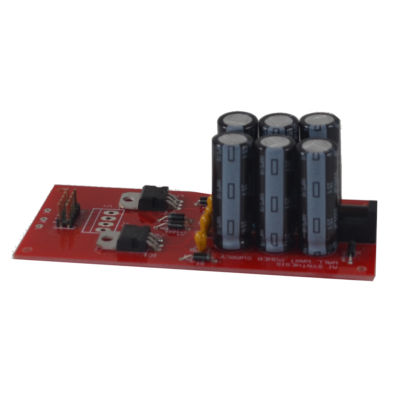Potentiometers are the components beneath the knob that actually do things. This article will teach you how Potentiometers work.
A potentiometer, or pot, is a three-terminal resistor with a rotating contact that forms an adjustable voltage divider. In our AI002 DIY Mixer Kit, the three input pots are voltage dividers that divide the voltage between the input and ground (silence). If only two terminals are used, one at one end and one at the center wiper, the pot acts as a variable resistor or rheostat. This is the use case for the master output in the AI002 DIY Mixer Kit.
Potentiometers are often used as voltage dividers to control the “volume” of an audio or cv signal. They take many forms, including:
- Sliders such as the fader of a mixer console, or crossfader of a dj mixer
- Pots such as those found on AI Synthesis Modules.
- Trimpots or trimmers meant to be adjusted once or infrequently. These are often found on the PCB behind the panel in a module and are used to fine tune frequency response in a filter, or wave symmetry in an oscillator.
Anatomy of a Potentiometer
Potentiometers have three lugs, the CW (clockwise wiper) lug, Wiper lug, and CCW (Counter Clock Wise) lug. The Wiper moves with the dial from the CW end to the CCW end. That’s how potentiometers work.
Potentiometer Taper Codes: A, B and C
You’ll note that pots will have a letter along with the value. For instance, the pots in the AI002 DIY Mixer Kit are A100k. This means that they have 100k of resistance between the opposite wipers, and the taper is Logarithmic or Audio. A B100k wiper would be Linear, and a C100k would be anti or inverse Logarithmic.
That’s a lot of syllables. Refer to the graph above. Logarithmic (A) tapers move quickly through the upper and lower ends, and have more range in the middle. Our ears react to volume logarithmically, so this taper is ideal for potentiometers that control audio, such as those on a mixer. Linear (B) tapers move through the voltage range equally, making it ideal for applications controlling voltage, such as the CV input on a filter. Anti-log (C) tapers are used less frequently, and the opposite of logarithmic tapers, but if you need more range at the lower and upper end and less at the middle, this taper is an ideal choice.
